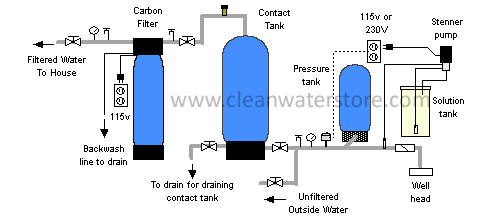I need help with selecting the appropriate equipment to filter well water in the US for rural household use.
Current situation:
- Greensand iron and hydrogen sulfide filter that has failed. Installed about 10 years ago.
- Local company that installed it claims they don't support it.
- Water discolors everything orange.
- There is a slight odor, but I don't know if it's caused by hydrogen sulfide, iron or something else.
- Septic tank withing 100 feet of well.
- Cattle are as close as 50 feet of well, but usually are more then 500 feet away.
- The adjacent property where the cattle graze (15+ acres) is sprayed with something that smells like fertilizer.
Requirements:
At a minimum, filter iron and be safe for drinking.
Solution must be modular to allow for other types of filtration to be added inline.
Cost less than $1,500.00.
Cost less than $250 for yearly maintenance.
Should be obvious when system needs maintenance before filtration failure occurs.
Should be DIY installable.
Should be made by a reputable company that provide good US support after purchase.
Filters should be certified by a reputable third party organization.
I also need:
- A recommendation for water test kits to determine the type of iron, iron ppm and general water chemistry to ensure safe drinking water.
- Help in determining the well pump flow rate and water pressure.
I've spoken to a few water filtration companies, both local and far. They all require a salesperson to come out, which is not going to happen now. Additionally, getting them to provide the total cost of the system has proven difficult. They only mention needing two maintenance items for $200 a year only to admit after repeated questioning that the system is going to cost between $4,500 - $5,000 installed.
Can anyone help ?

